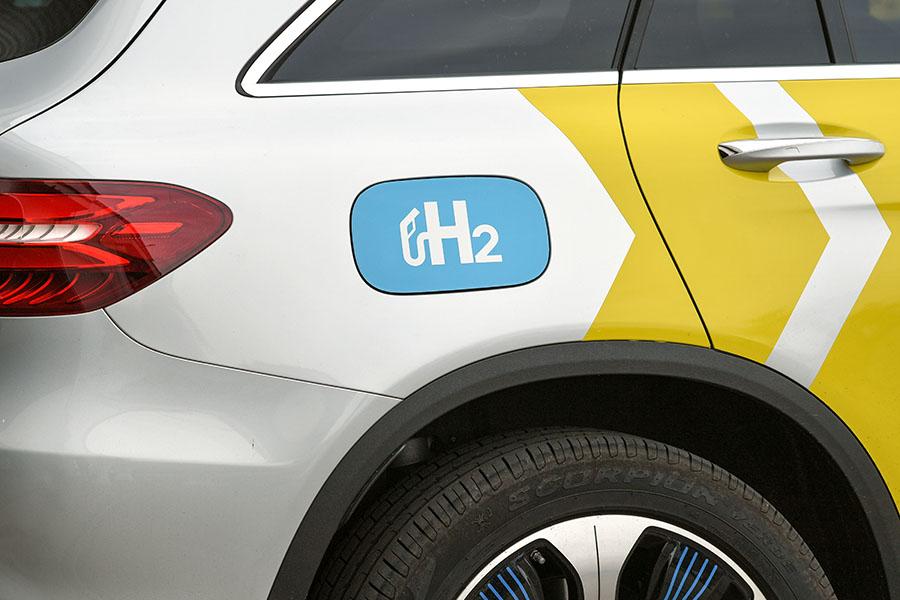Decoding the 'H' factor: How hydrogen can revolutionise the push for clean mobility
While the enthusiastic uptake of electric technology is exciting, it is also important for leading OEMs to stay abreast of the emergence and furthered penetration of alternate fuel technologies, like hydrogen, that supplement the move towards zero-emission transportation
Propelled by the global thrust towards sustainability and carbon neutrality, industry leaders and governments have joined hands to build a world that is less reliant on carbon and powered by clean fuel sources. Leading from the front, the Government of India has committed to reducing the emissions intensity of its GDP by 45 percent by 2030 from its 2005 levels. Being a prime sector that drives the wheels of our economy and bears a significant impact on energy consumption, the automotive industry has specifically planned and implemented tangible changes and contributed to the fulfilment of the national targets.
Government incentives and rising consumer demands have accelerated the move toward electrification, with India’s electric vehicle market showcasing a projected growth rate of 49 percent between 2021-30. While this enthusiastic uptake of electric technology is exciting, it is also important for leading OEMs to stay abreast of the emergence and furthered penetration of alternate fuel technologies that supplement the move towards zero-emission transportation. Hydrogen being a prominent energy carrier, in particular, offers intriguing possibilities.
First steps: HCNG or Hydrogen-enriched compressed natural gas
Hydrogen-enriched compressed natural gas (HCNG) is a blend of a small quantity of hydrogen (up to 18 percent) and CNG that has sparked interest as a relatively low-emission fuel option. It lowers fuel consumption and enhances thermal efficiency while reducing carbon monoxide emissions significantly when compared to CNG.
To test its benefits, the Delhi government launched a pilot project in 2020 with 50 HCNG buses in the capital. This came after the Supreme Court’s advice on exploring fuel options that could reduce emissions and help tackle air pollution. While the study has not yielded conclusively positive results yet, the potential of HCNG is something worth considering. Initial results suggest that considerations such as the mixing of hydrogen at the source, the percentage of the blend and appropriate capital investments will be important to help scale up such a model.
Fueling the EV revolution: FCEVs
While the EV market currently is dominated by battery-electric vehicles (BEVs), hydrogen can play an important role by powering fuel-cell EVs (FCEVs). Fuel cell technology relies on hydrogen’s chemical energy to produce electricity cleanly and effectively. FCEVs use a stored hydrogen-powered cell stack, instead of batteries to power vehicles. This effectively makes them amongst the cleanest modes of transportation, with no harmful tailpipe emissions, emitting only water vapour and warm air.
FCEVs will be pivotal in the electric future precisely because they possess higher energy density and require shorter fueling time which is a necessity for long-range applications. They can help to do away with range anxiety within customers if developed and offered as optimal solutions. They are inherently renewable and environment-friendly and future technical enhancements can improve the overall well-to-wheel efficiency for FCEVs, pegged at 30-35 percent today. Amidst a growing electric market that is only going to become more diverse and sophisticated over the second half of this decade, one can expect FCEVs to assert their presence as a strong complement to pure BEVs.
Thinking bigger: Exploring hydrogen ICEs
While the two potential uses of hydrogen discussed are undergoing a fair amount of development in the current era, one technology that is still in its infancy but could exert a revolutionary impact is the combustion of pure Hydrogen using IC Engines. FCEVs and BEVs, despite impressive developments, have limitations to deliver the specific high-power and duty cycle needs of heavy-duty commercial vehicles. For example, long-haul trucks and tippers operate under challenging conditions, running round-the-clock and consuming huge amounts of power.
Also read: Not just Tata Motors, Mahindra too has now built India's most valuable electric vehicle company
Internal combustion engines (ICEs) have effectively catered to these demands for years. Swapping diesel for hydrogen in ICEs can be an efficient way of decarbonizing engines. Of course, further research and development is a necessity on this front, especially to tackle the inherently high combustibility of hydrogen and to leverage the potential in a controlled manner. However, existing research suggests that hydrogen combustion can be an effective way of helping remove carbon dependency in heavy-use transportation. It would also require lesser technical interventions and could continue to rely on existing engineering know-how.
Driving innovation for the future
Achieving the zero-emissions target is a challenging goal for the automotive sector, one it is striving to meet in earnest, with efforts from all directions. Investing time and effort in developing hydrogen technology, whether in the form of the transitional HCNG, the promising FCEV or the revolutionary hydrogen combustion engine can together yield promising results. Government support, with initiatives such as the National Hydrogen Energy Mission Programme, combined with the collective faculties of leading players in the industry will play an instrumental role in ushering in a clean and green era of mobility.
The writer is president and CTO of Tata Motors.
The thoughts and opinions shared here are of the author.
Check out our end of season subscription discounts with a Moneycontrol pro subscription absolutely free. Use code EOSO2021. Click here for details.

